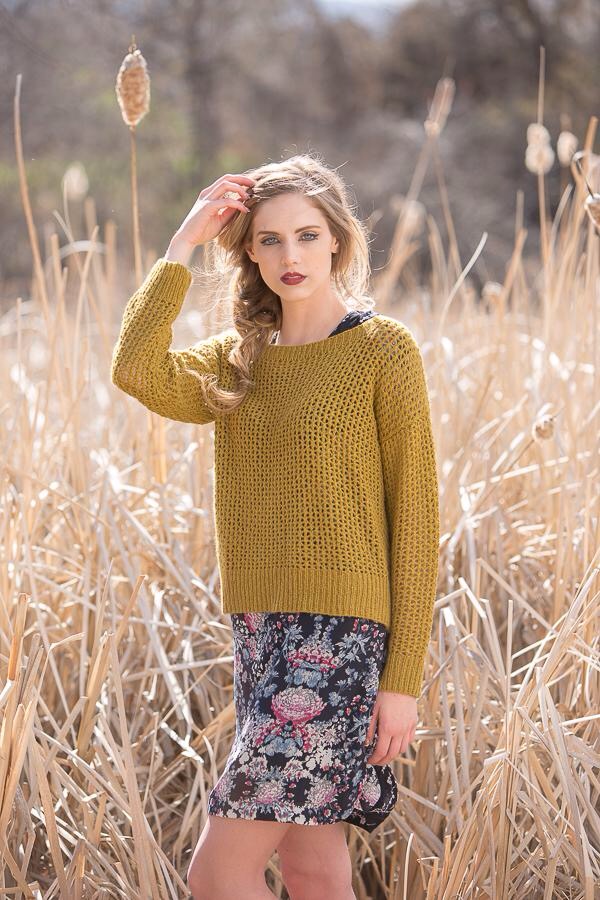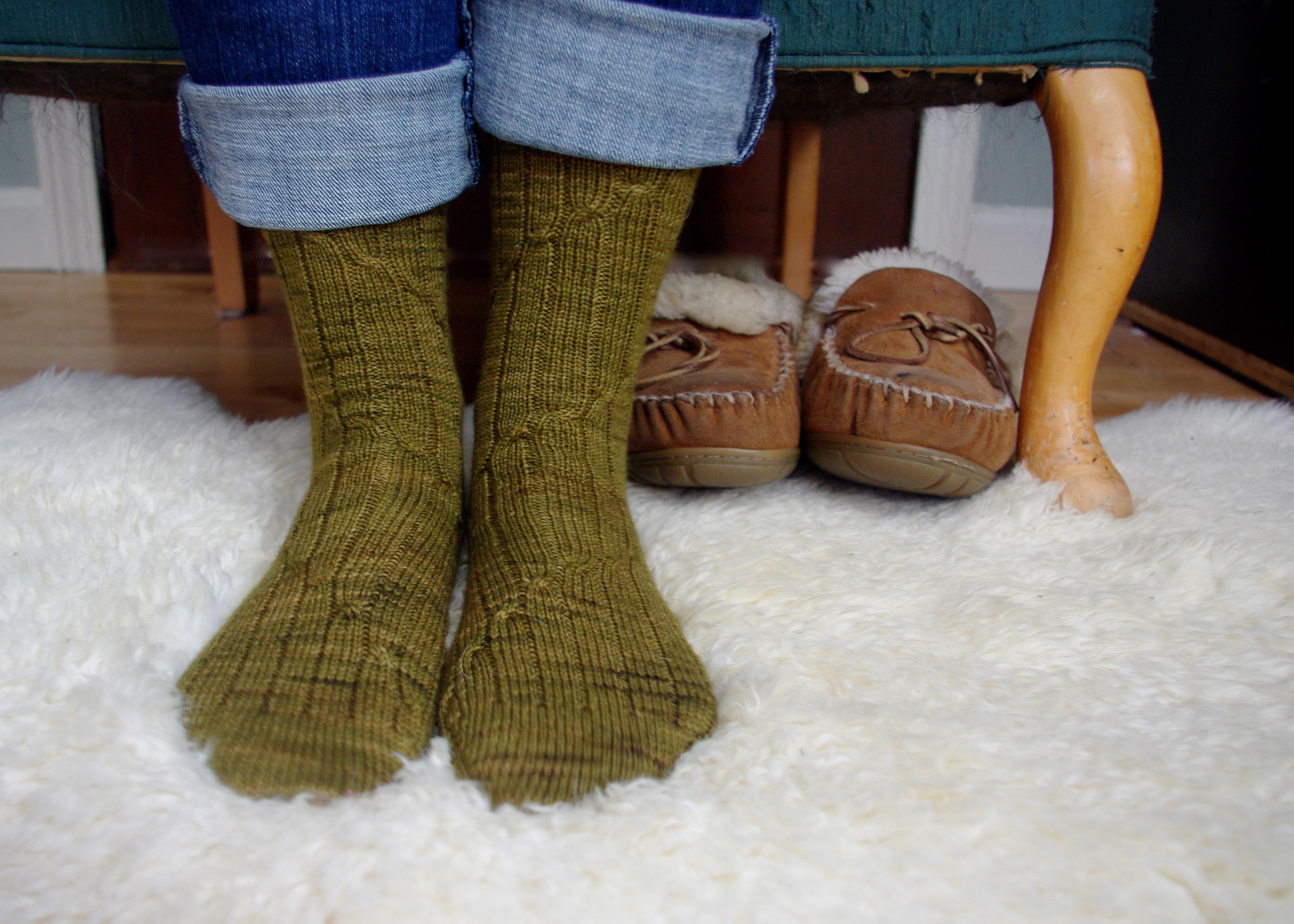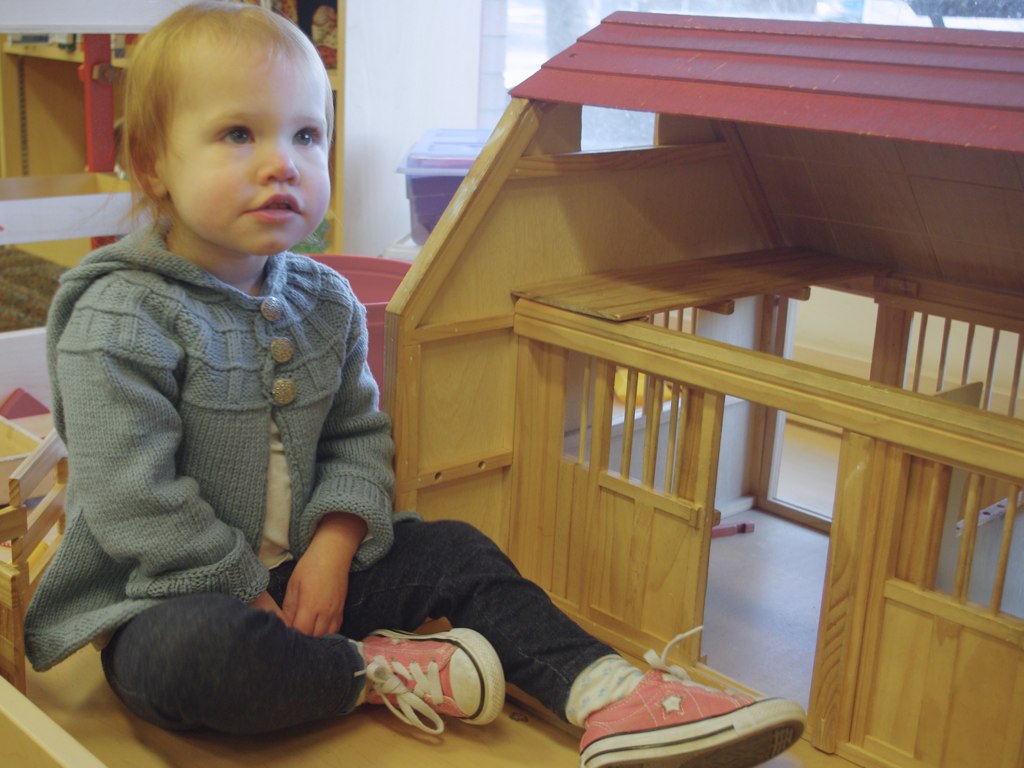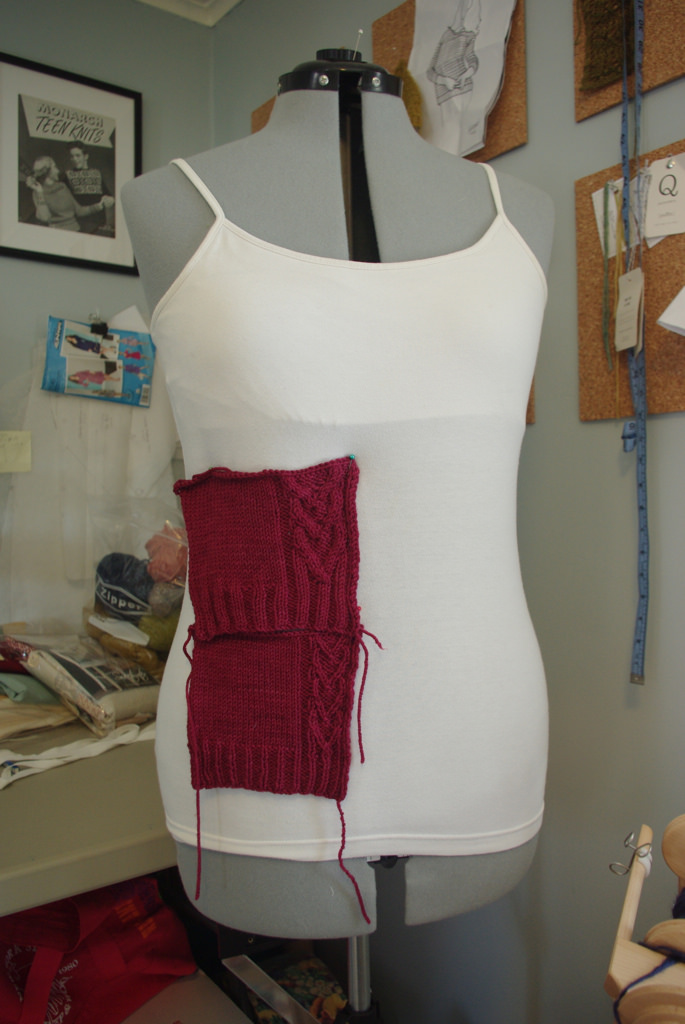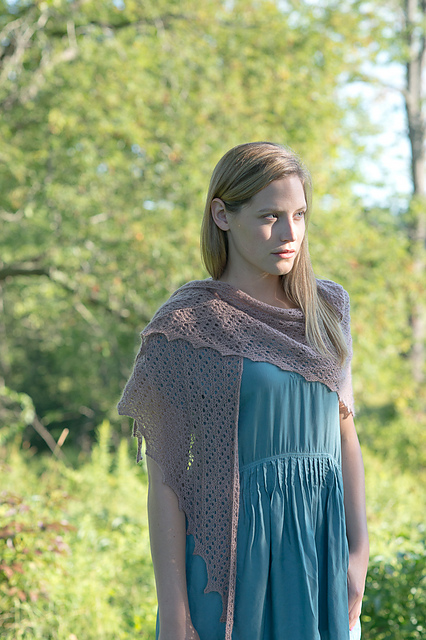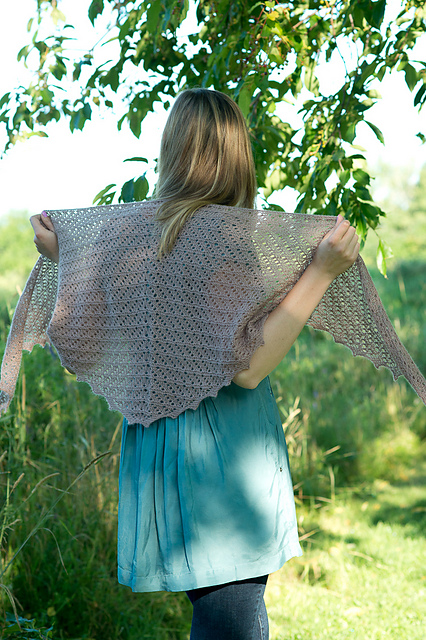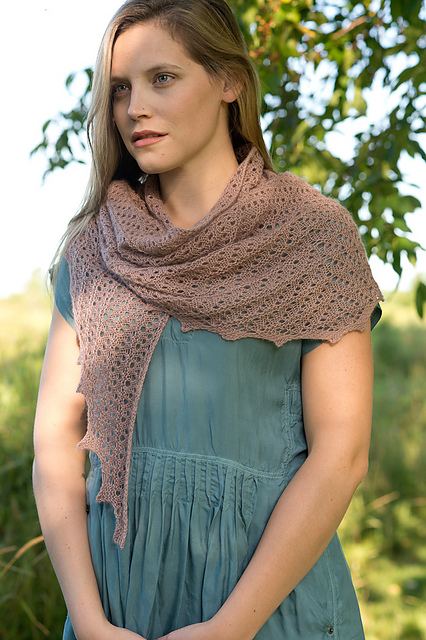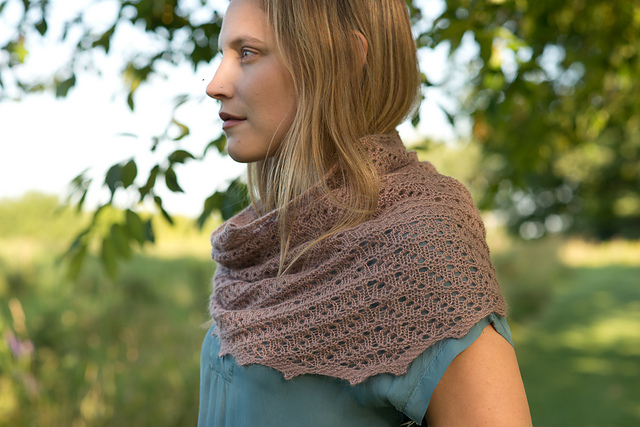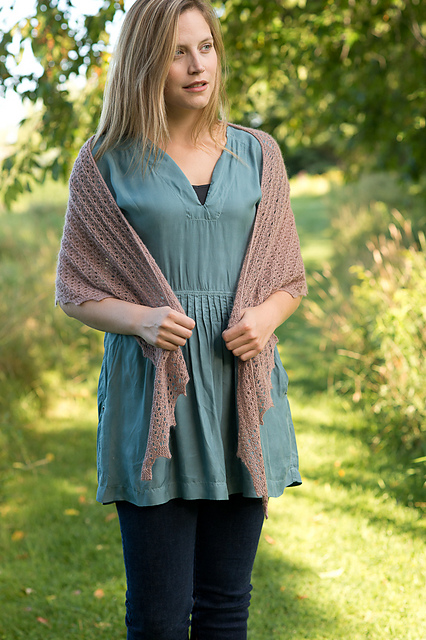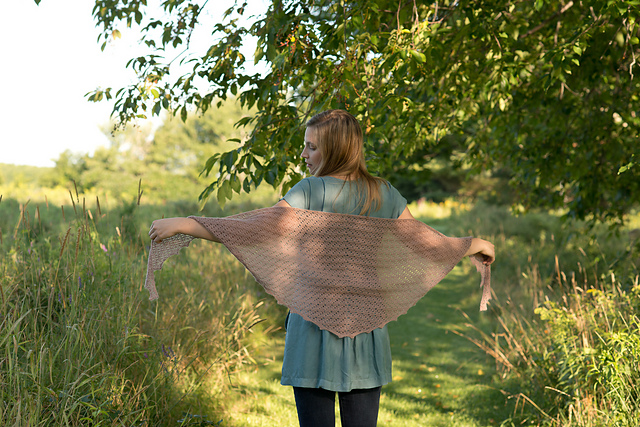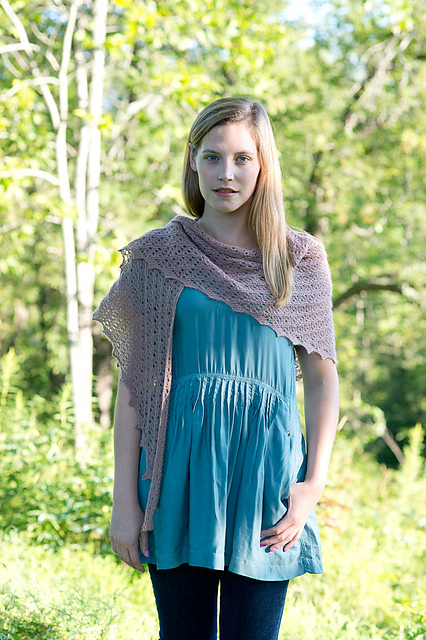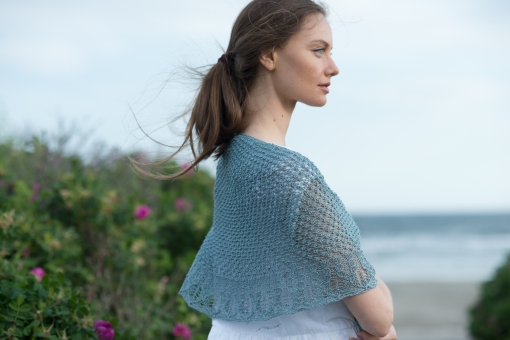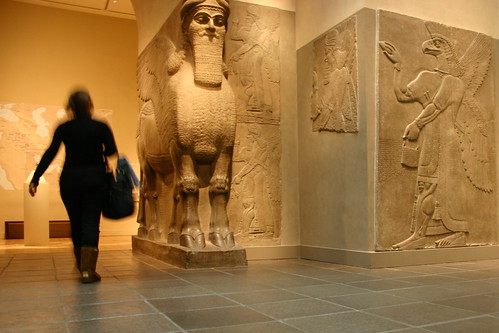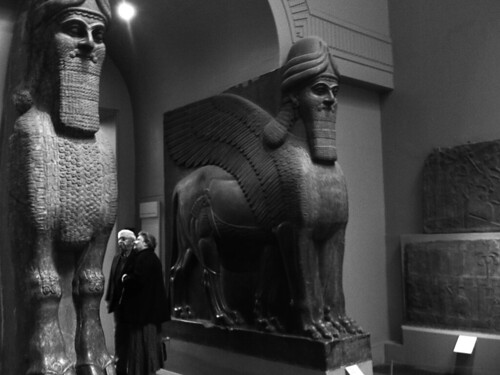More often than not, I'm a "come up with a design idea and try to find the right yarn" kind of designer, but in the case of the Cormac Sweater in the new Fall Knitscene? Completely the other way around.
Knitscene had put out a call for submissions back in October for items featuring chainette-style yarn. Something, I'll admit to never having used before, but my curiosity piqued, I went down to my Local Yarn Store and picked up a skein of Shibui Maai. They had a sample of it knitted up at the shop, a super cushy garter stitch scarf. But when I got the yarn home and began knitting with it, cushy didn't feel right to me. It was so springy and light, that I wanted to push it even further in that direction, the yarn screamed out "make me lace!" And so I did.
A simple 4 stitch/4 row lace pattern was quickly decided upon and knit up on larger than usual (for me, anyway) needles. All air and lace and drape, but like eiderdown, the loftiness and halo of Maai fill in the gaps, meaning Cormac is a sweater that is both lacey and warmer than you'd think.
I wanted the fabric to be center stage, but also knew that the drapiness of the fabric could make fancy shaping a bit of a bear, so a boxy construction, with drop-shoulder sleeves made the most sense. It seemed like something one of those impossibly chic girls would wear for a morning at the cafe, hair in a messy bun, oversized latte with foam art and a paperback novel near at hand. Easy to pull on and as comfortable as a sweatshirt, but a whole lot prettier.
Because of the minimal shaping and the larger needles and the simple lace, Cormac is also a pretty quick knit. If I had to make one change, I'll probably make the sleeve cuffs a bit snugger and/or the sleeve a tad bit shorter, but when I had seamed the whole thing together and hung it on my mannequin, I thought - yes, that is just what I wanted it to be.
Cormac, along with a number of other gorgeous designs like Annie Watt's Oddity Scarf, Nadya Stalling's Couturier Jacket and Courtney Spainhower's Caldwell Pullover, are available in the Fall 2015 issue of Knitscene, currently available digitally, and on newsstands on July 14th. In the meantime you can queue or favorite it up on Ravelry.
Do you have a favorite design in this issue? Have you ever worked with chainette yarn? Does your yarn ever get demanding with you like the Maai was with me?
You can see some of my previous Knitscene designs here or on Ravelry.
All Photos: Courtesy of Knitscene/Harper Point Photography

